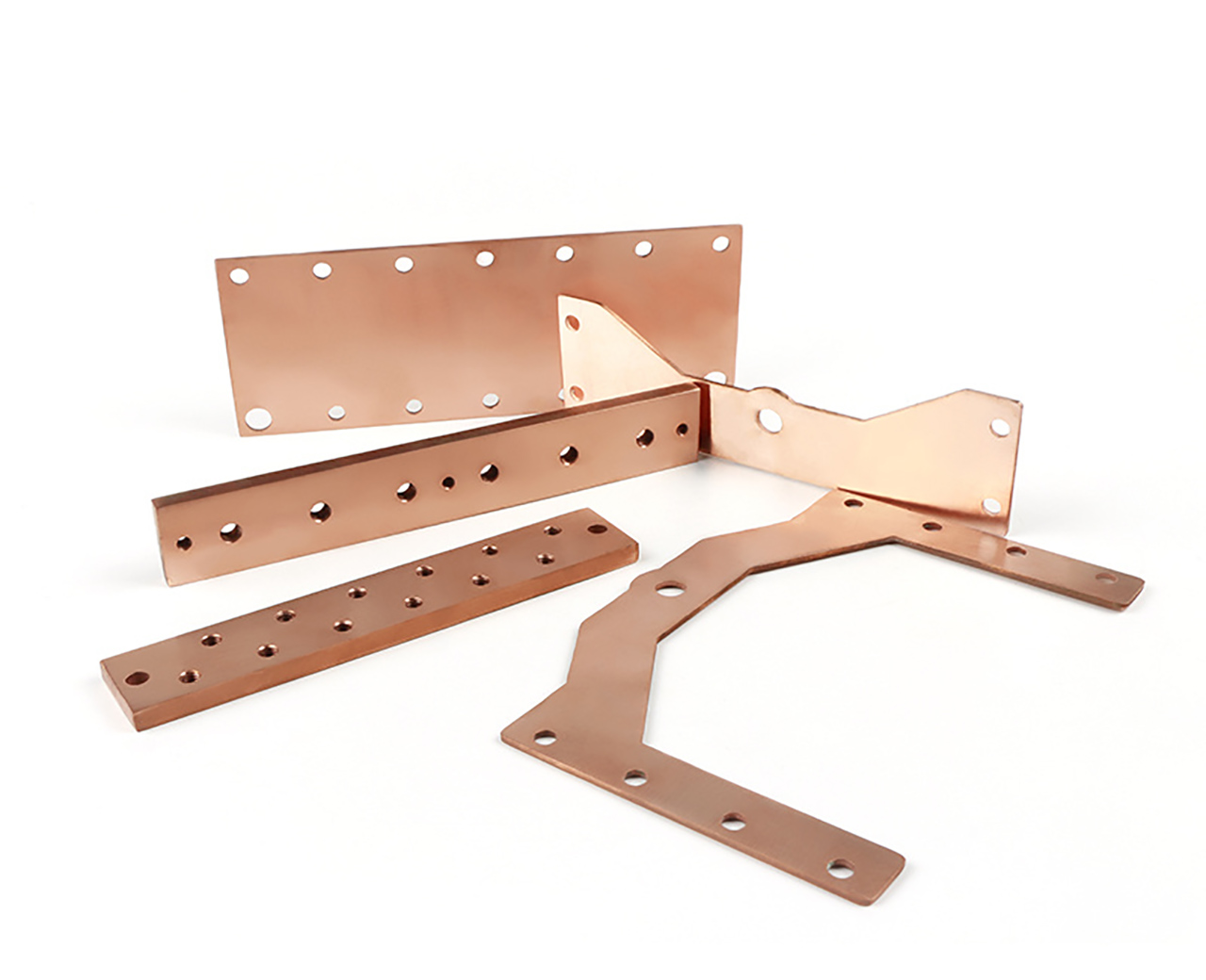2025-07-03 17:46:35
Custom bus bars are precisely engineered conductive components designed to distribute high electrical currents with minimal energy loss. Unlike standard bus bars, custom variants are tailored to specific voltage, current, and spatial requirements. Key technical characteristics include:
Current Capacity: Custom designs can handle currents from 100A to 50,000A, with cross-sections optimized using IEC 61439-1 derating factors (typically 1.2A/mm² for copper at 40°C ambient).
Material Selection: High-conductivity copper (C11000, 101% IACS) or aluminum (6061-T6, 55% IACS) with optional silver/tin plating (5-10μm thickness) for oxidation resistance.
Voltage Withstand: Designed for 600V to 38kV systems, with creepage distances calculated per IEC 60664-1 (e.g., 16mm/kV for pollution degree 2).
Thermal Performance: Temperature rise limited to 65°C above ambient per UL 891, using thermal simulations to optimize heat dissipation.
Mechanical Strength: Tensile strength ranges from 200-400 MPa for aluminum alloys to 250-550 MPa for copper alloys.
Advanced custom bus bars incorporate features like water-cooling channels (for 3000A+ applications), fiber-optic temperature sensors (±1°C accuracy), and segmented insulation (3kV/mm dielectric strength).

In manufacturing facilities, custom bus bars form the backbone of 400V-6.6kV power distribution systems. Modular designs allow for 5000A capacity in compact footprints, with tap-off points spaced at 300-600mm intervals per IEC 61439-6.
Solar farms utilize Aluminum Bus Bars with ≥4mm thickness to interconnect PV strings, designed for 1500VDC operation with UV-resistant insulation. Wind turbine applications require flexible bus bars capable of ±15° deflection to accommodate tower movement.
High-density server racks employ Copper Bus Bars with 0.5mΩ/m resistance to deliver 800A at 480V with 99.98% efficiency. Intelligent monitoring systems track temperature at 5mm resolution along the bus length.
EV charging stations use water-cooled bus bars rated for 1000A continuous with IP67 enclosures. Rail applications require 25kV rated designs with 50kA short-circuit withstand capacity per EN 50123.
Aviation-grade bus bars feature aluminum cores with 0.1mm nickel plating, weighing 60% less than copper equivalents while maintaining 200A/in² current density at -55°C to 125°C operating range.
Thermal Imaging: Quarterly infrared scans to identify hotspots exceeding 10°C above baseline (per NFPA 70B).
Torque Verification: Annual checks of bolted connections using calibrated torque wrenches (±10% of manufacturer's specification).
Insulation Testing: Megger tests at 1000V DC to maintain insulation resistance >1MΩ (IEEE 43).
Contact Resistance: Clean contacts showing >50μΩ increase from baseline using non-abrasive cleaners.
Corrosion Mitigation: Apply antioxidant compound (e.g., NO-OX-ID A-Special) when copper sulfide formation exceeds 3% surface area.
Structural Integrity: Replace bus bars exhibiting >0.2mm permanent deformation or cracking detectable via 10x magnification.
For critical systems, implement continuous monitoring with IoT sensors tracking:
- Real-time temperature (±0.5°C accuracy)
- Vibration (0-10G range)
- Partial discharge (>5pC sensitivity)
Expected service life varies by material:
- Copper: 30-40 years in controlled environments
- Aluminum: 20-25 years with proper maintenance
End-of-life criteria include:
- 15% increase in DC resistance
- 50% reduction in mechanical strength
- 3+ insulation breaches per meter